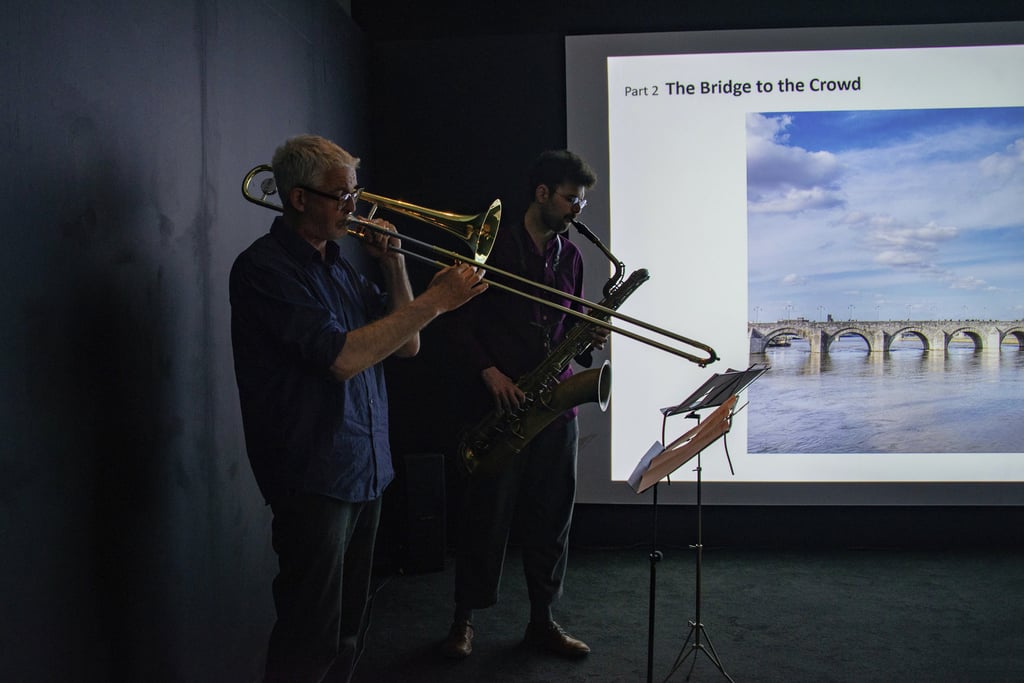The pull of the City, Bureau Europa/Maastricht
In 2022 I was commissioned by Bureau Europa for their exhibition Frozen Music: the design of sound and space. The exhibition explored how architecture and music overlap through rhythm, proportion, dynamics, and harmony and how sound can reveal the built environment in new ways.
Murat Ali Cengiz
9/27/20223 min read
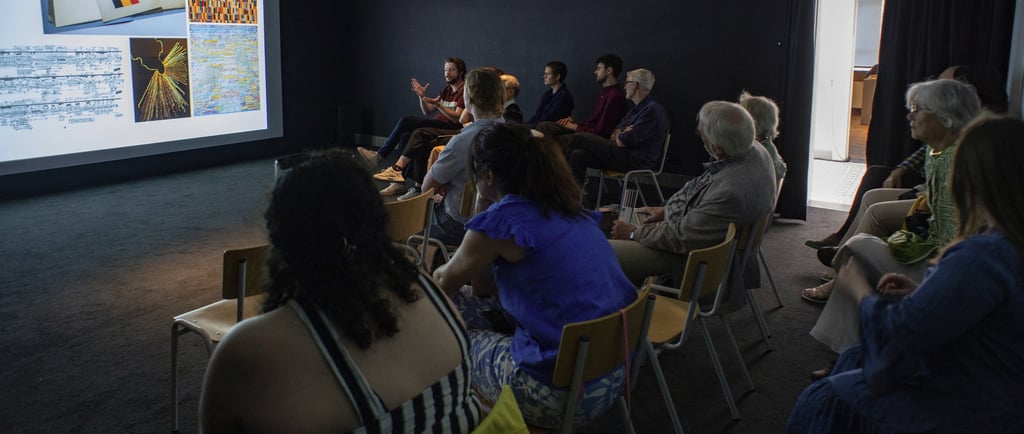

In 2022 I was commissioned by Remco Beckers at Bureau Europa for their exhibition Frozen Music: the design of sound and space. The exhibition explored how architecture and music overlap through rhythm, proportion, dynamics, and harmony and how sound can reveal the built environment in new ways.
Read more about Frozen Music on Bureau Europa’s website
For my contribution, I created the composition The Arrival and the Pull for the trombone (Joost Buis) and baritone saxophone (Giuseppe Doronzo). It is based on a walk through Maastricht, taken without a map, letting the streets themselves guide me to Bureau Europa. That route became the skeleton of the piece, with pavement patterns transcribed into rhythmic and melodic motifs that shaped the score.
The composition doesn’t stop at Bureau Europa. I decided to continue further, ending at a site where a motorway exit once stood. Now it remains as an architectural fragment—part ruin, part sculpture—and for me it was the most compelling place to conclude the journey.
At the station, spaces narrow and tension builds—movement toward the city’s core. Trombone and Baritone Saxophone comp together, creating dense textures and rhythmic interlocks that mirror the press of passengers and the pull of trains.
Crossing the Maas: vast, suspended, exposed to open air. Trombone solo with Baritone comping. Long sustained tones stretch across the space like arches of a bridge. Silence is as important as sound.
Landmarks punctuate emptiness—dots on pavement, a vertical red tower. Trombone and Baritone in counterpoint. Short dotted rhythms, overlapping lines, and mirrored gestures recreate the scattered geometry of this area.
The city square, where old and new press together. Crowds create a forward thrust. Baritone solo with Trombone comping. Repetitive motifs and ornaments build pressure, pulsing with the push of the square.
Beyond Bureau Europa lies the ghost of a motorway exit. Sparse, haunting, yet alive with fleeting traces. Trombone and Baritone together. Low sustained tones and fragmented figures. Brief motifs—“the girl, the bird”—appear and vanish. The work dissolves into quiet counterpoint, closing the journey.
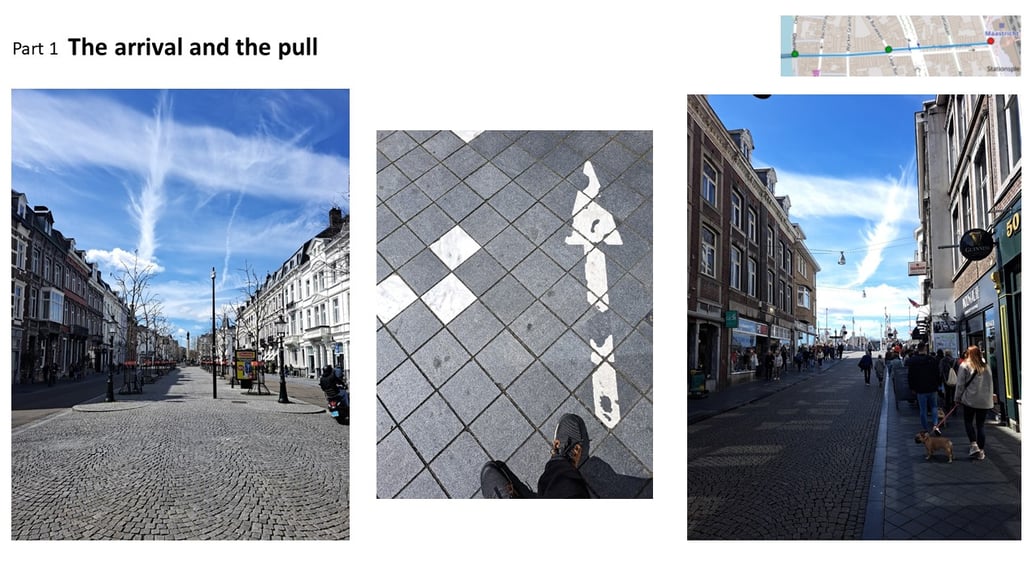

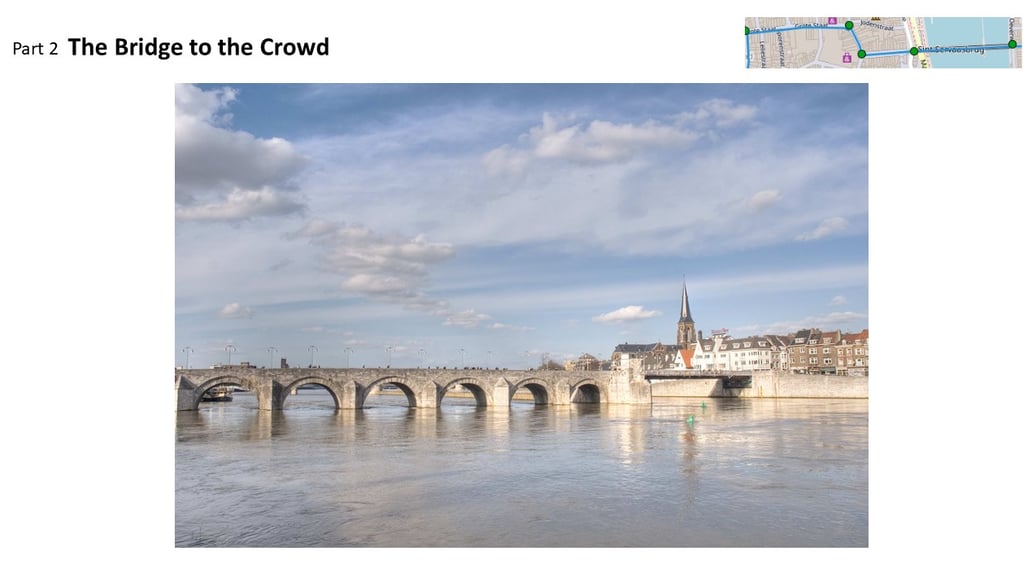

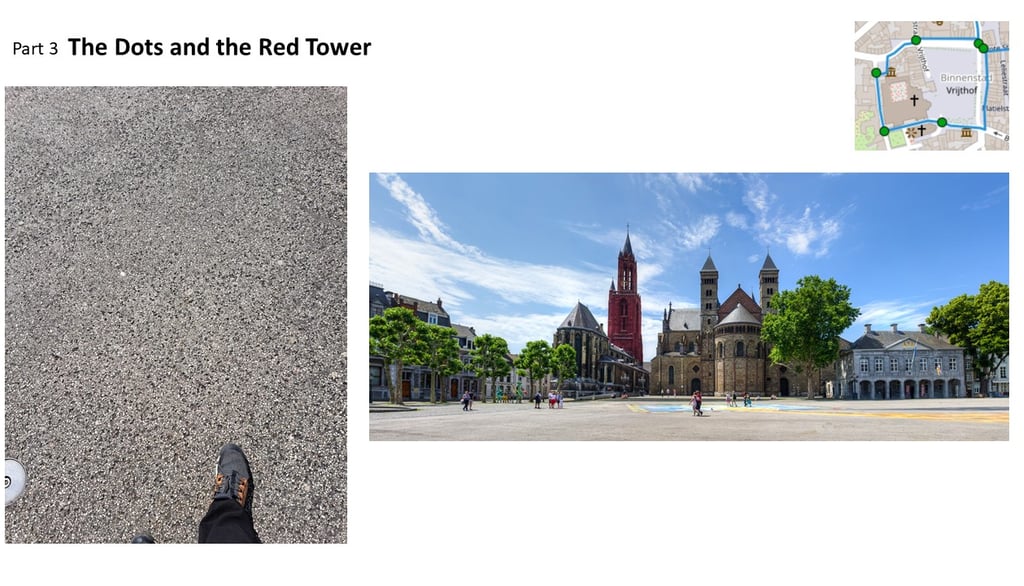

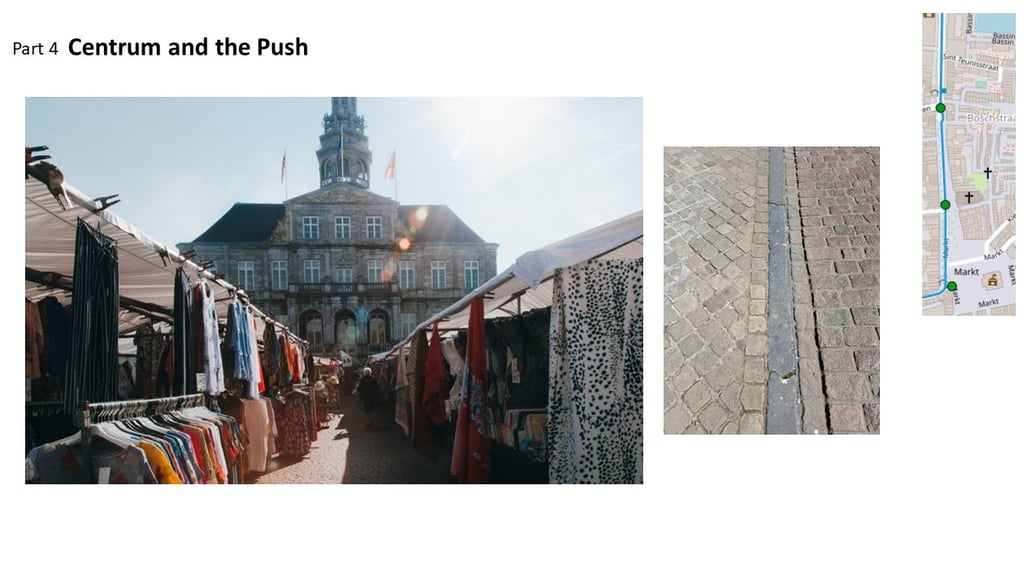

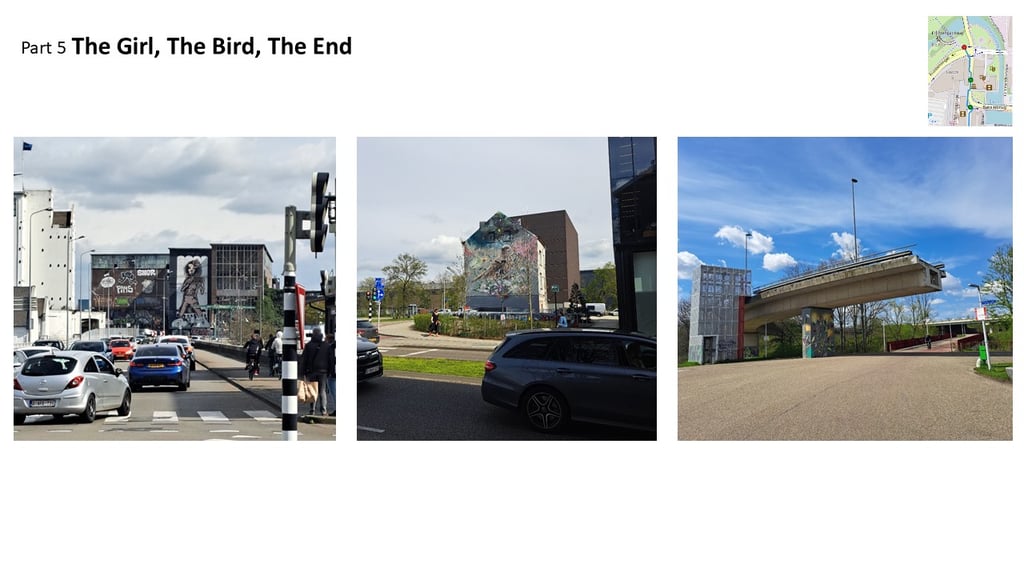

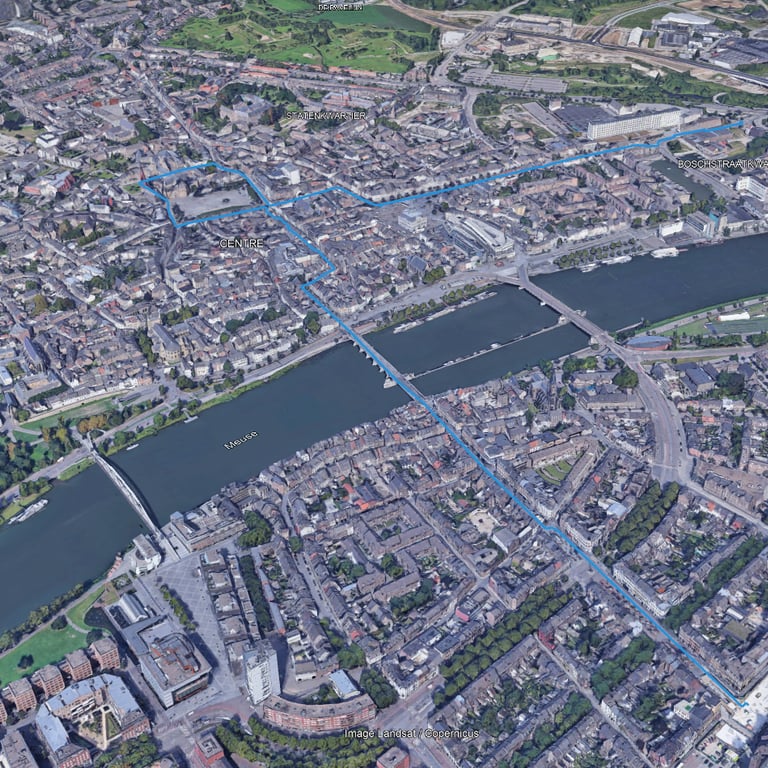
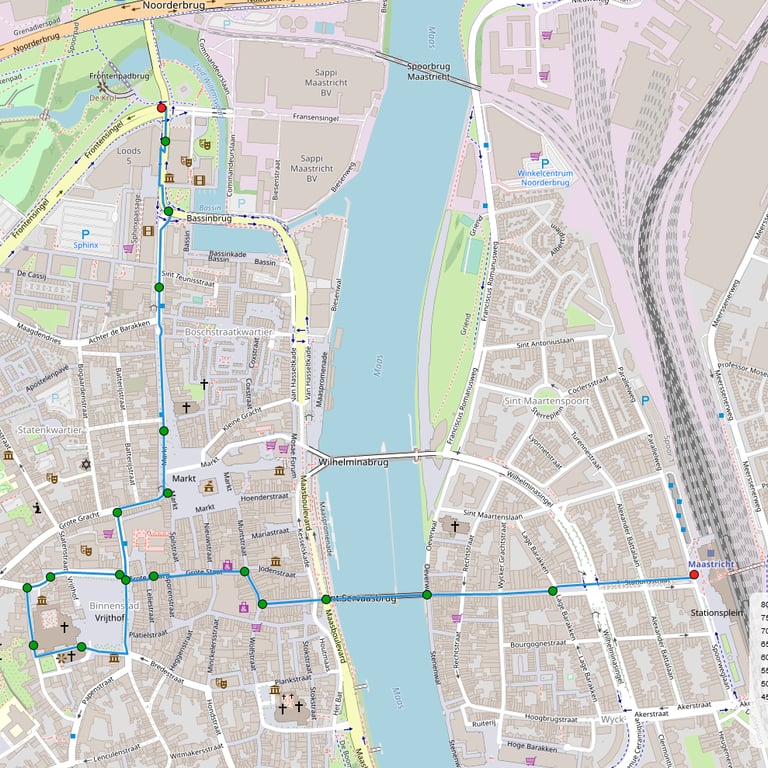
The Five Parts of the Journey
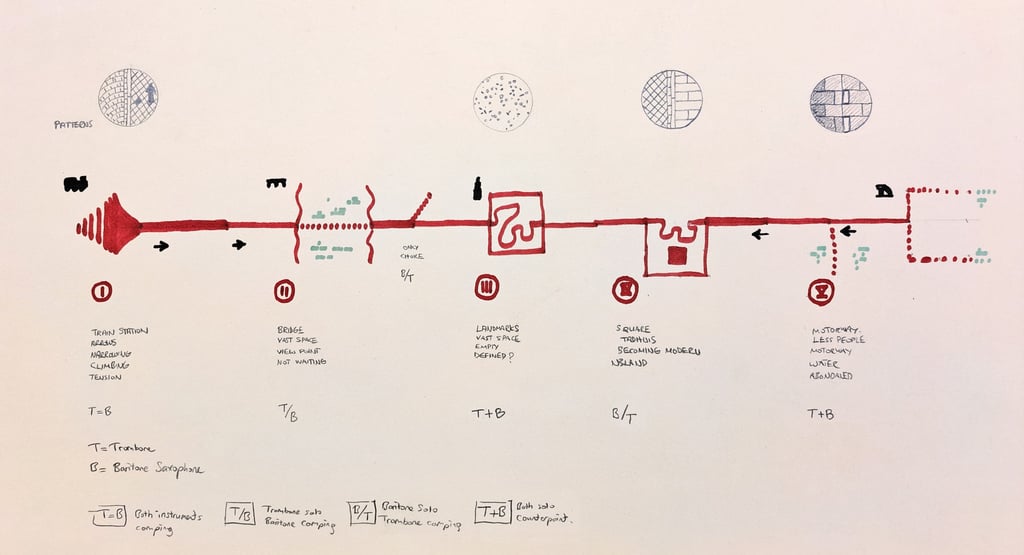

Notes on the Score
The circles, grids, and bricks in the score are direct transcriptions of Maastricht’s pavements. They form the rhythmic and melodic seeds of the music.
Arrows and paths indicate directional cues, encouraging transitions rather than enforcing them.
Roles (solo vs. comping) are defined, but pacing and duration are left open, giving performers interpretative freedom.
In performance, the audience follows the musicians through the spaces, experiencing the journey as both soundscape and cityscape.
